Visit the exhibit at UN Headquarters in New York, on display until 1 May 2024
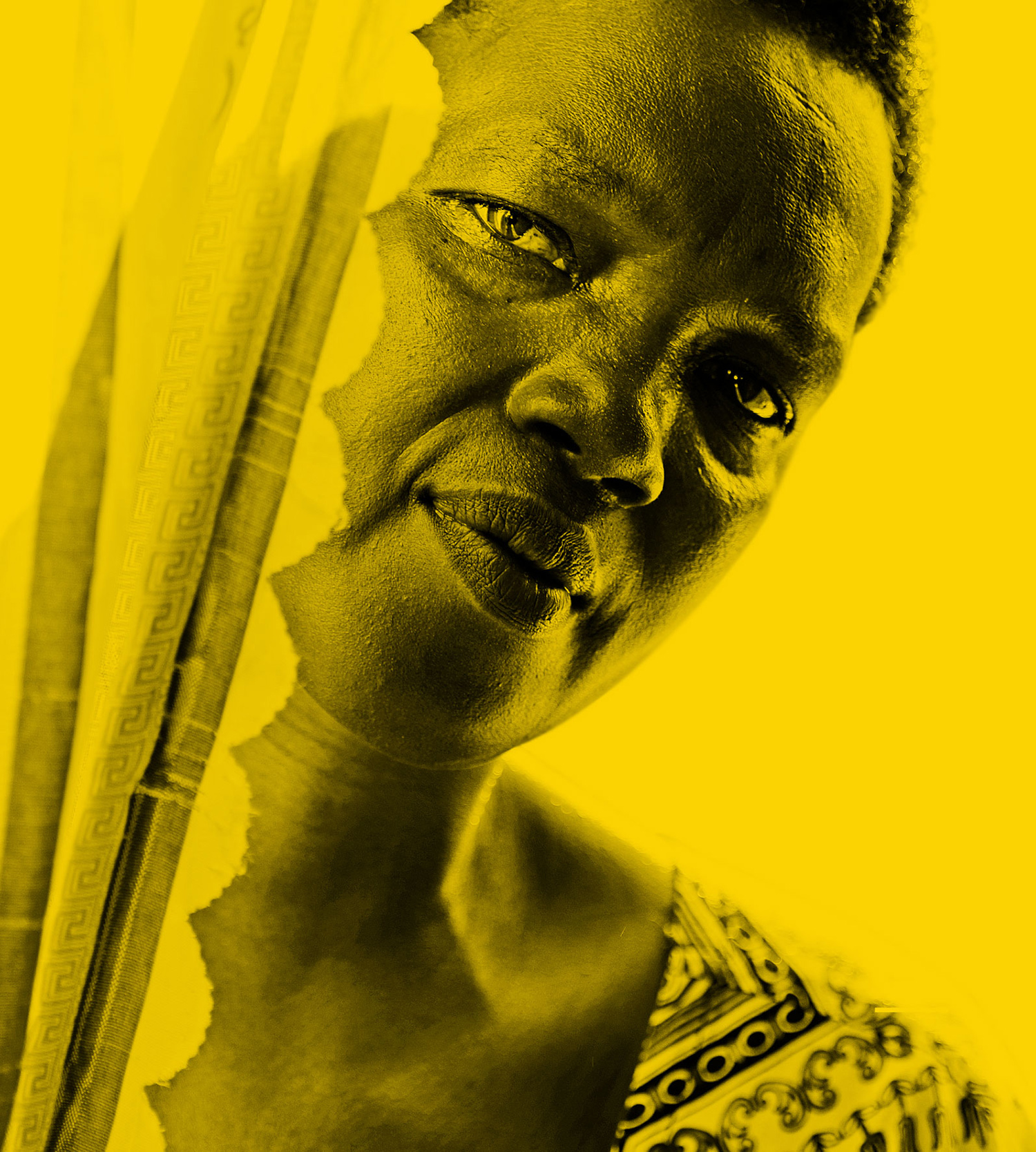
Laurence Niyonangira, Genocide survivor. UN Photo/Manuel Elías
Remember.Unite.Renew.
The 1994 Genocide against the Tutsi in Rwanda left unanswered questions across an entire society. How do I live with what I have seen? How do I live with what I have done? Who am I without my community?
Only one option remained – to move forward.
Today, Rwanda is a testament to the power of post-genocide reconciliation. Among the stories of hope is that of Laurence, a survivor, and Xavier, her family’s killer, who now live as friends. Explore their journey, the impact of hate speech and how your actions can make a difference.
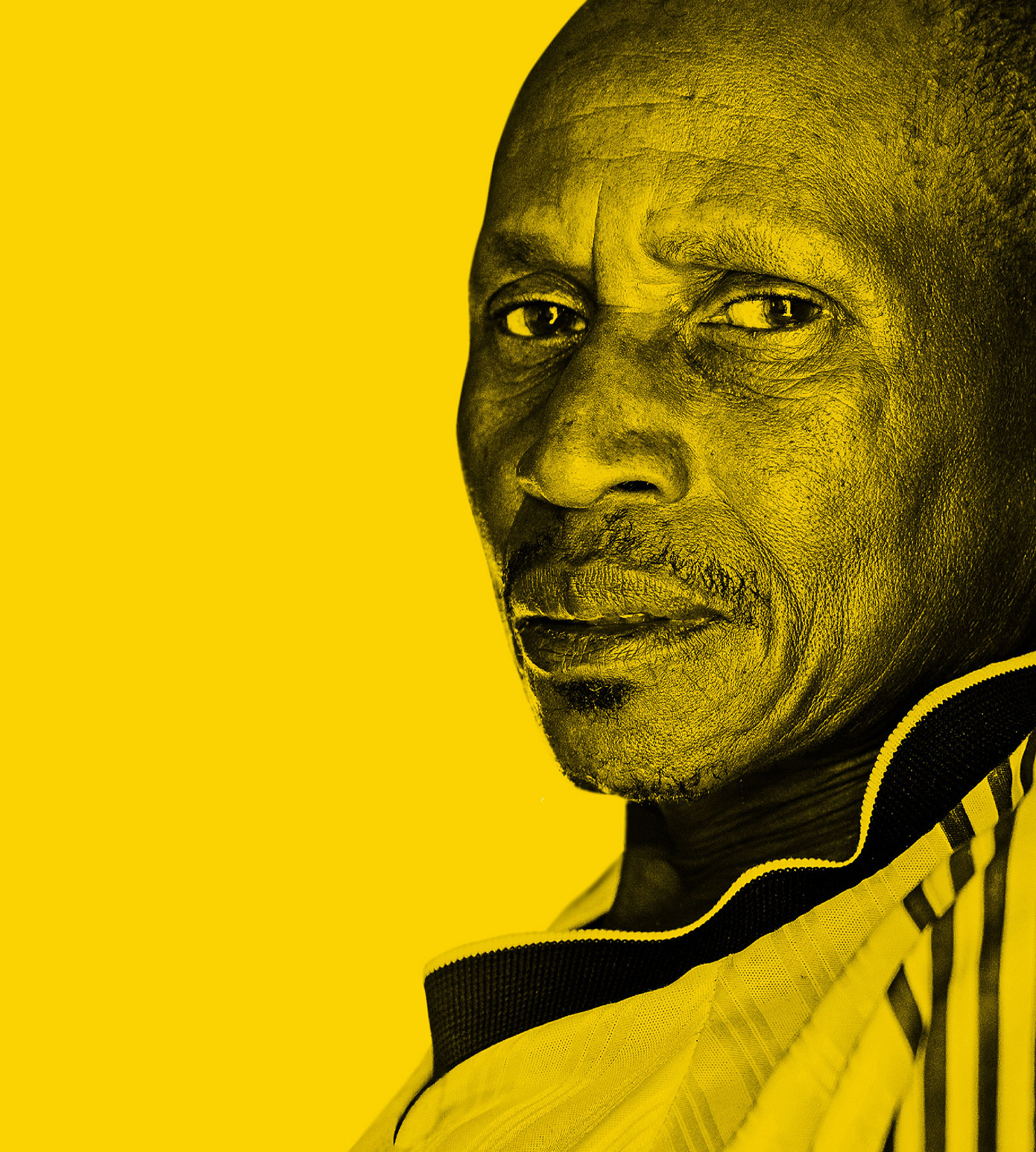
Xavier Nemeye, Reformed genocide perpetrator. UN Photo/Manuel Elías
100 Days of Terror
- 100 days How long the genocide against the Tutsi in Rwanda lasted in 1994
- Around 1 million People killed, mainly Tutsi but also moderate Hutu and Twa
- A quarter million People raped and sexually abused
- Over 120,000 Perpetrators convicted in the killings
Did you know?
The word “genocide” was first coined by Polish lawyer Rafał (Raphael) Lemkin, following the Holocaust. He led the campaign to have genocide recognised and codified as an international crime.
Determining if genocide occurred is a legal matter. Only a competent court with jurisdiction to try such cases can make the decision, after all the facts are examined.
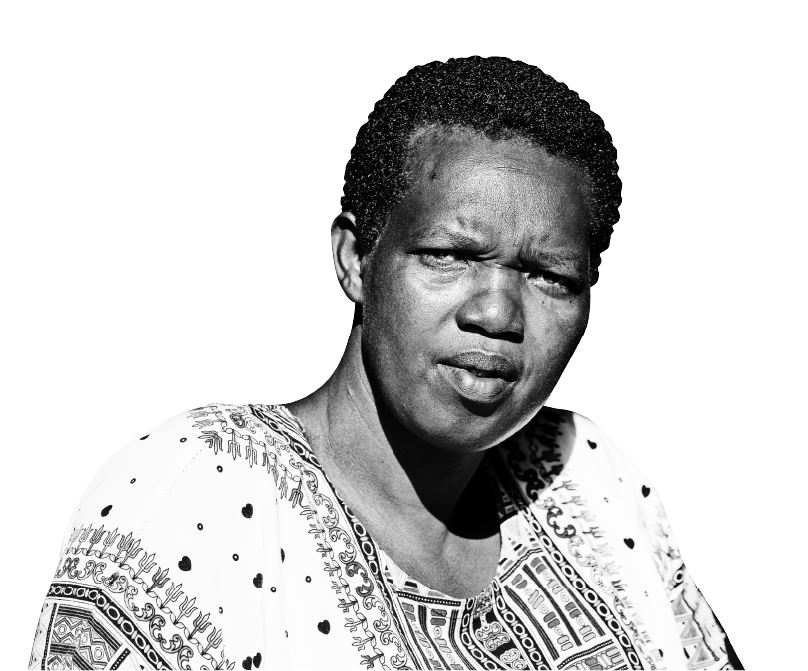
Laurence Niyonangira survived the genocide.
But 37 of her relatives were killed. She was 20 years old.
Those who killed innocent people got nothing from their crimes. No one can think about doing it again,” says Laurence today.
Propaganda fuels hatred
Tall and thin, Laurence remembers Hutu students at school taunting her that they would “resize” her, echoing a vicious stereotype that Tutsis were “too tall”.
Perished lives
Her father once gave cows to Hutu neighbours, hoping to plant seeds of friendship. But when the genocide began in April 1994, they killed him.
Fleeing for safety
Laurence fled her village carrying one child on her back and heavily pregnant with another. At a checkpoint, overcome by horror, she begged soldiers to kill her, but they refused to “waste” a bullet on a pregnant woman.
Shelter
A young Hutu man and family friend took her in, giving her food and shelter until she could walk south to a refugee camp across the border with Burundi.
As Laurence fled with her children, she promised God that if they survived, she would someday, somehow forgive the killers.
Years later, still imprisoned, Xavier wrote to Laurence confessing to killing her mother and sisters, and asking her forgiveness.

It was the first news Laurence had of their fate, and the shock and grief sent her into a long depression. “It took away my hope that somehow they had survived. But I remembered my promise to forgive.”
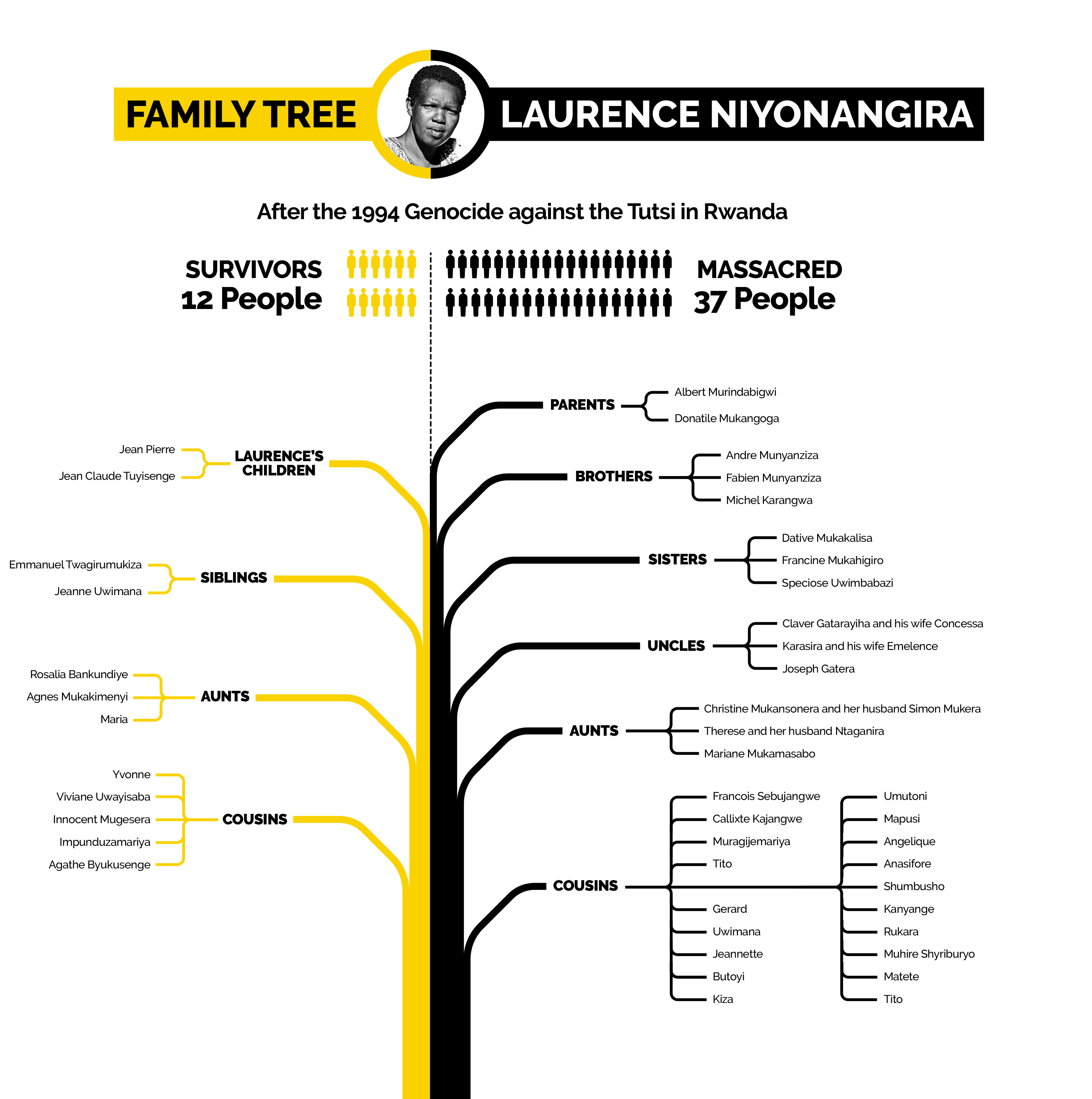

Xavier Nemeye was 30 years old when he took part in the genocide.
I have never seen anything so tragic and terrible. Everyone loses,” he reflects. “I share my stories with young people so they can create a different future.” – Xavier Nemeye
Years of propaganda
By spring 1994, Xavier had been influenced by years of propaganda against the Tutsi, sanctioned by the then-government. Xavier believed the lies despite his mother being Tutsi – a secret she hid by marrying a Hutu man – and despite being friends with Tutsi families.
Violence
In April 1994, Xavier joined 15 young men who collected farming tools as weapons. They found a Tutsi woman and two of her daughters – Laurence’s mother and sisters – and beat them to death in a small trench used for ripening bananas.
Shame
Overcome by shame at what he had done, Xavier went home to protect his mother from potential attackers. He never told her the details of his crimes.
Imprisonment and enduring guilt
Imprisoned for years after the genocide, Xavier confessed his guilt and was released. But he thinks constantly about what he did.
We were trained to think of each other as enemies, not to build a relationship. It was dehumanizing. Reconciliation and forgiveness remind you that each life has value.” – Xavier Nemeye
As survivors, we can only heal our wounds with the people who created them.” – Laurence Niyonangira
Uniting through forgiveness
When Laurence first met Xavier after the genocide, the fear was paralysing: “I was so afraid that even if I forgave him, he would come back and kill me,” she remembers. Community meetings and sessions with religious leaders eased tensions.
Xavier began to help her with tasks around her home, which she saw as proof of his genuine repentance. Both she and Xavier describe each other today as friends who meet at family celebrations and lend each other small sums when needed.


The villages are a partnership between Prison Fellowship Rwanda and the Government of Rwanda, with support from the international community.
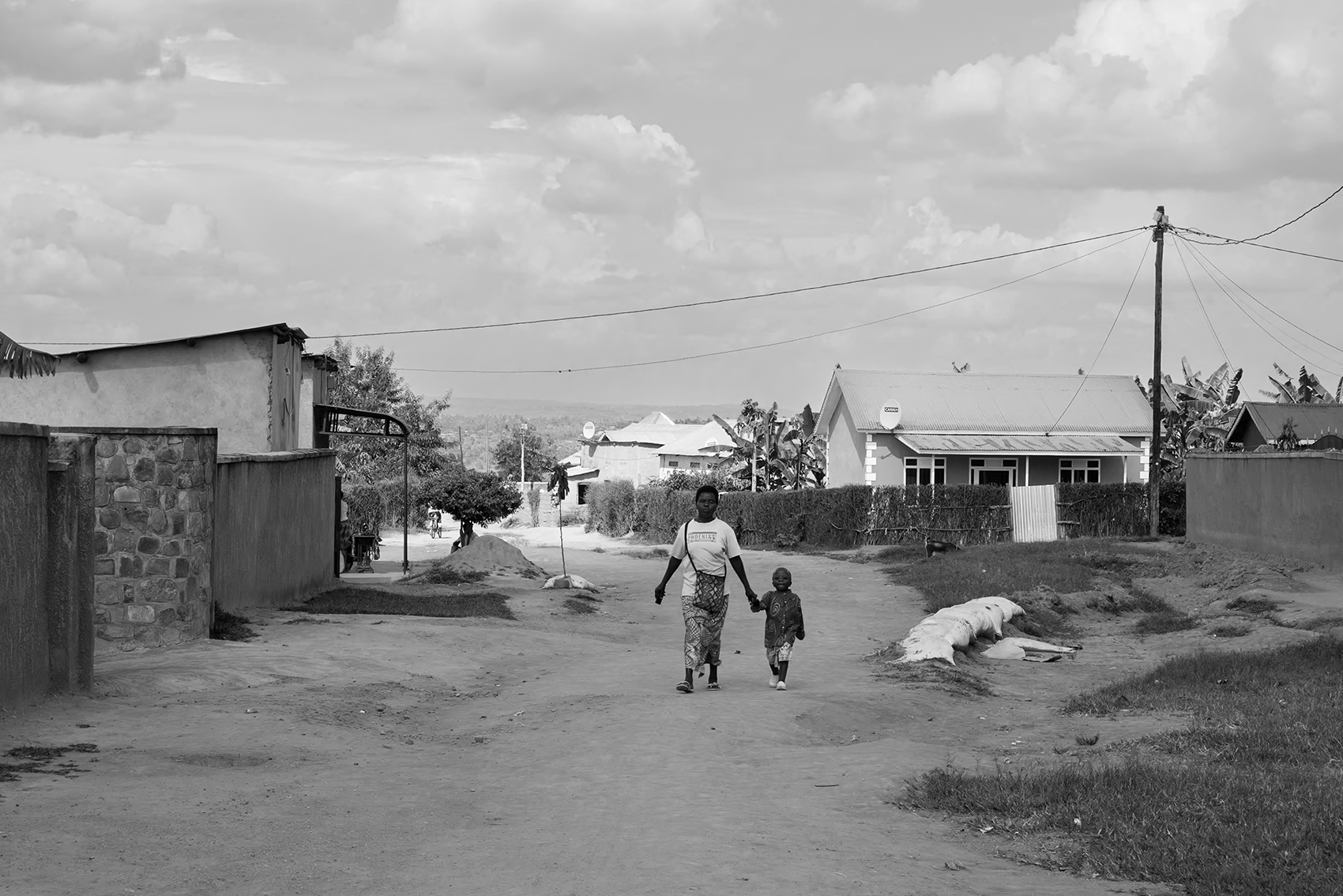

Unique to Rwanda, the villages are part of the country’s collective efforts to heal wounds and bridge divisions.
Thousands of genocide survivors live next door to reformed perpetrators in eight unity and resilience villages throughout Rwanda.
Their children and grandchildren attend school and play together, living as “Rwandans”.
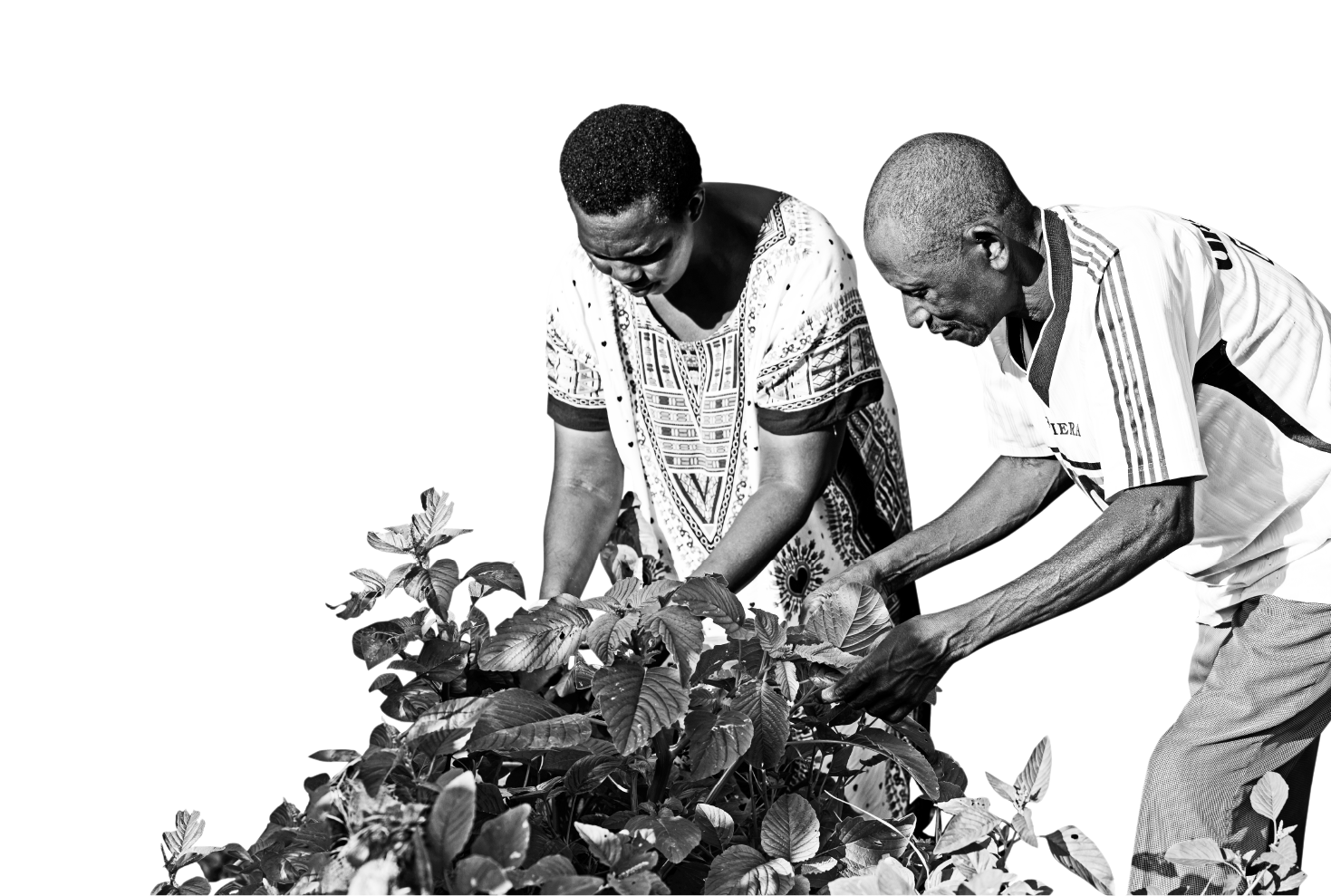
Laurence and Xavier lived side by side in the Mbyo Unity and Resilience Village.
Justice after the genocide
Xavier is one of more than 120,000 people accused and tried for participating in the genocidal killings. Some perpetrators are still on the run. New mass burial sites continue to be found. People are still missing.
International Criminal Tribunal for Rwanda
In the aftermath of the genocide, the United Nations Security Council created the International Criminal Tribunal for Rwanda (ICTR). It indicted nearly 100 high-ranking officials and other individuals responsible for the gravest crimes committed in 1994.
In its landmark “media case”, the ICTR became the first international tribunal to hold members of the media responsible for broadcasts intended to inflame the public to commit genocide.

The National Court System
Rwanda’s national courts prosecuted those accused of planning the genocide or committing the most severe atrocities, including rape. The task was difficult because many judges, lawyers, and other judicial staff were killed during the genocide, and much of the country’s infrastructure was destroyed.
The Gacaca Court System
The sheer number of perpetrators meant that most were sent to traditional community courts called gacaca (pronounced GA-CHA-CHA). In the gacaca system, community-elected judges heard cases on all crimes except planning of genocide. The gacaca courts gave reduced sentences to perpetrators who repented and sought reconciliation with their community by telling the truth about what happened to missing people.
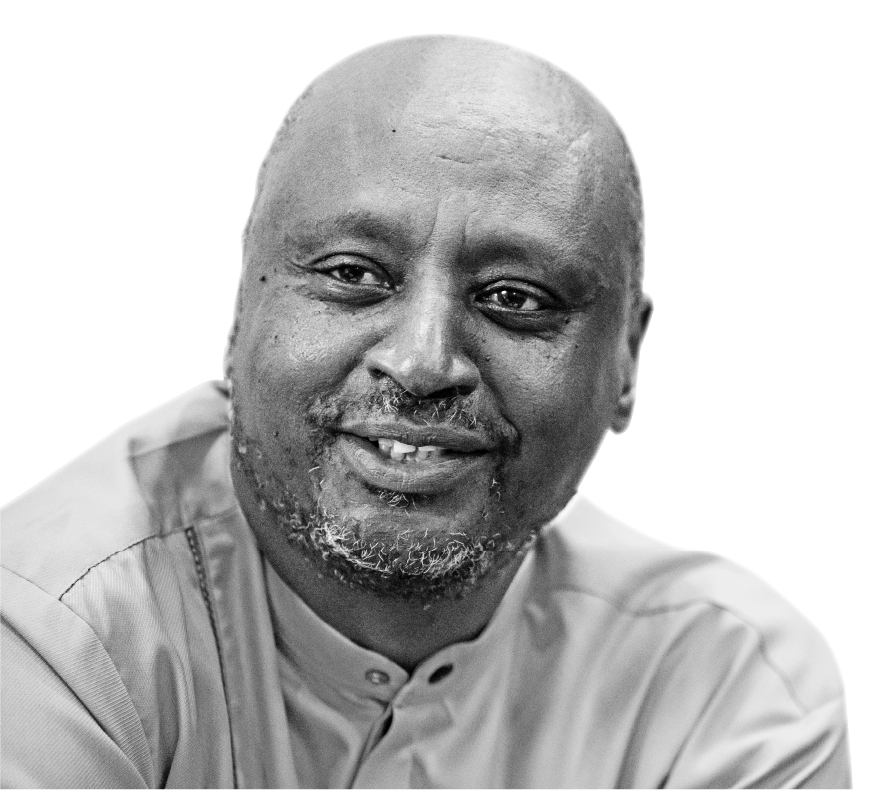
I lost 45 family members in the genocide. At first, there was so much trauma in my heart. I began working on restorative justice in prisons and realized that when offenders were willing to ask forgiveness for what they did, we could bring them together with their victims to seek reconciliation. I never met those who killed my own relatives, but I found hope in this journey.
When I saw people helping each other and crying because they could finally imagine a different life, I knew that peace could contribute to healing.” — Bishop Deo Gashagaza, head of Prison Fellowship Rwanda
We created community spaces for healing, where people can gain a sense of security, social cohesion and trust.
It is not easy – but it is possible. Increasingly, we focus on youth because the trauma has been passed to the younger generation, the children of survivors and perpetrators. They have feelings of shame as well as anger and fear that it could happen again.” — Chantal Ingabire, service provider at Community-Based Sociotherapy

The genocide happened when I was 3 years old…Much of what I learned came from my Mom because my Dad was unable to speak about it until 2017. I see other young people asking lots of questions. Some wonder why they have no relatives. Others have parents in jail. Young people want to know the truth about their past, both the genocide and the values and dignity of our heritage. We are educating [youth] because when you know where you come from, it becomes easier to navigate the future.” — Christian Intwari, founder of Our Past Initiative
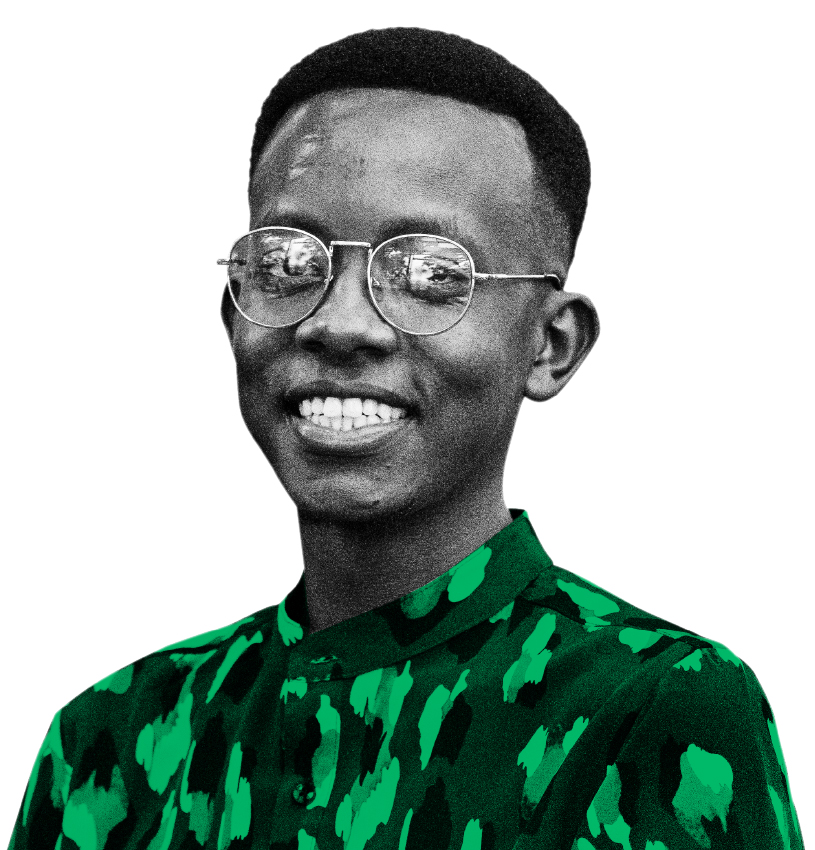
The need for reconciliation existed before the genocide, when the social fabric was torn apart under colonialism. Tremendous work since 1994 has helped to overcome the hatred and fear, such as by removing ethnicity from identification cards and enacting pro-poor policies. But challenges remain. We must build resilience to cement the gains made and ensure history does not repeat itself.
There is genocide denial on social media. Many people live with unhealed wounds and unanswered questions, and reconciliation – while advancing – remains a journey." —Révérien Interayamahanga, researcher on reconciliation and resilience with Interpeace
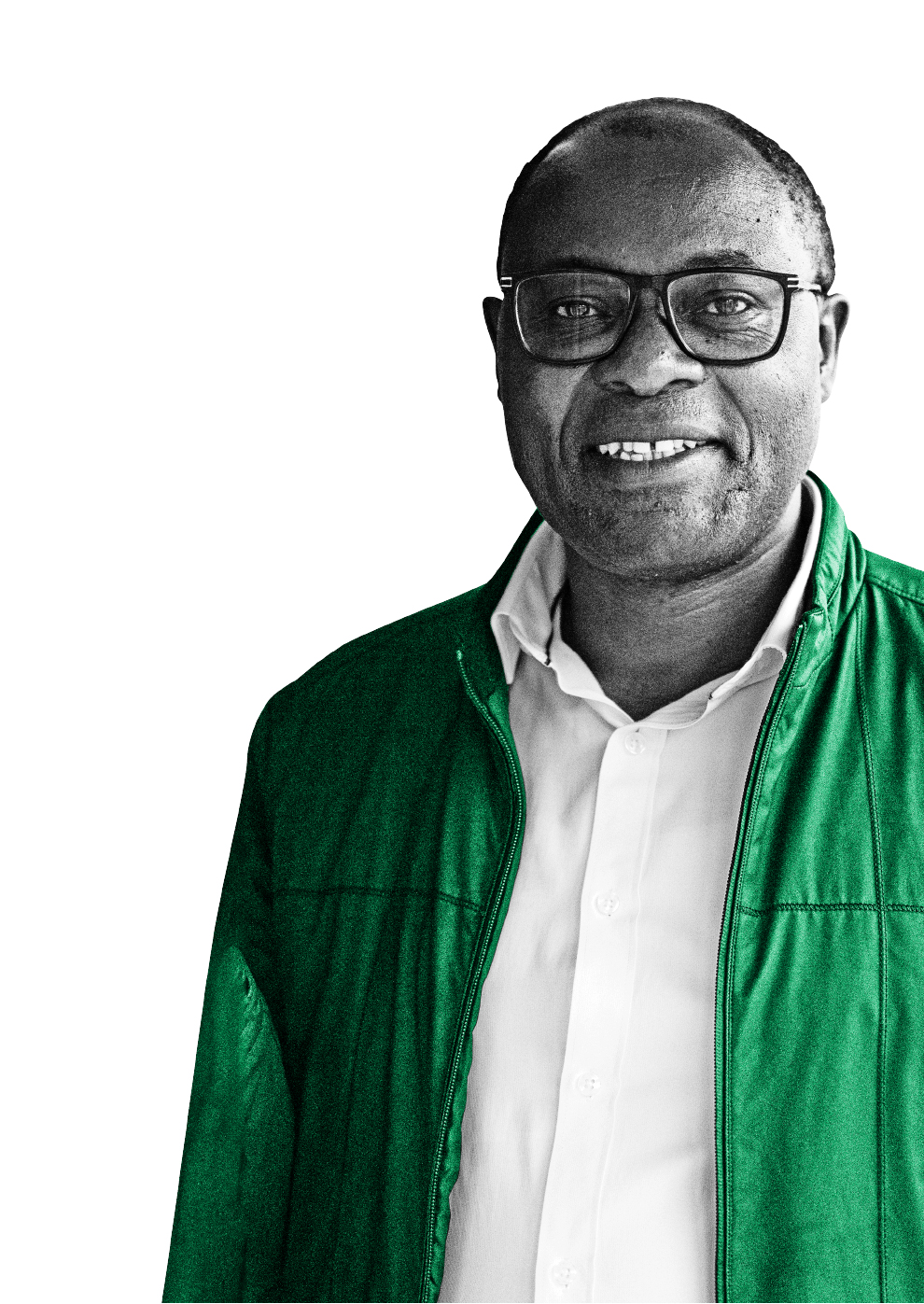
The zigzag symbol on Rwanda’s famous Agaseke, or peace basket, represents women holding hands.
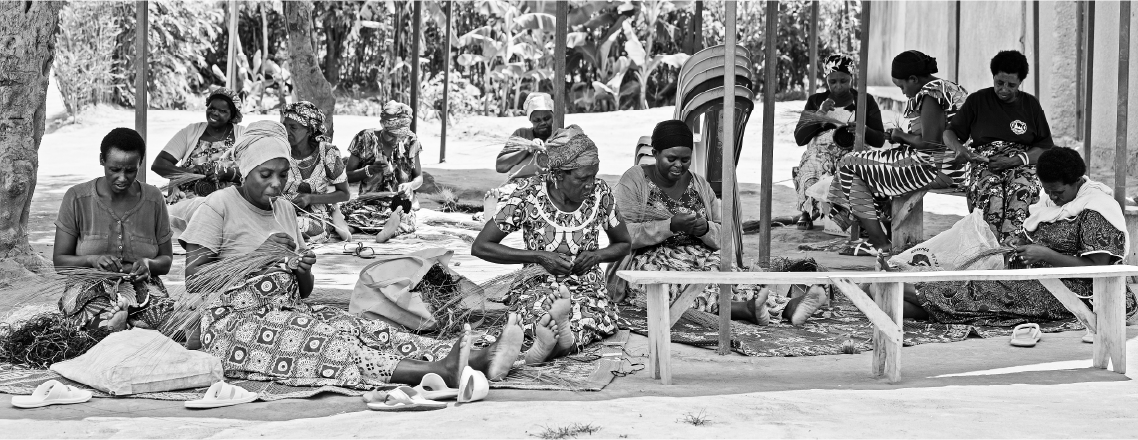
As in many countries and cultures, it’s the women who mend a society after conflict. In Rwanda, in a remarkable display of resilience and solidarity, women overcame traumas to weave together and create thriving artisan cooperatives.

What is genocide?
Greek prefix genos (people, race or tribe), and the Latin suffix cide (killing)
According to international law, genocide means any of the following acts committed with intent to destroy, in whole or in part, a national, ethnical, racial or religious group, as such*:
(a) killing members of the group;
(b) causing serious bodily or mental harm to members of the group;
(c) deliberately inflicting on the group conditions of life calculated to bring about its physical destruction in whole or in part;
(d) imposing measures intended to prevent births within the group;
(e) forcibly transferring children of the group to another group.
*Convention on the Prevention and Punishment of the Crime of Genocide, adopted by the United Nations General Assembly on 9 December 1948
Intent to destroy
The legal definition of genocide includes intent to destroy in whole or in part, which is the most difficult element to determine.

To commit genocide, a perpetrator must have a proven intent to destroy a national, ethnical, racial or religious group, as such.
It is this special intent, or dolus specialis, that makes the crime of genocide so unique.
Did you know?
Events that do not meet the definition of genocide may constitute war crimes or crimes against humanity, which are separate crimes under international law.
War crimes
are serious violations of international humanitarian law during armed conflicts
Crimes against humanity
are committed as a part of a widespread or systematic attack directed against a civilian population
Dark side of humanity
The 1948 Genocide Convention legally defined the term “genocide” adding to the body of international law on grave abuses of human rights.
Tragically, the world witnessed genocides before 1948, including the Holocaust, which is the state-sponsored, ideologically-driven persecution and murder of six million Jews across Europe and from North Africa, and half a million Roma and Sinti by Nazi Germany (1933–1945) and collaborators. The Nazis also targeted people with disabilities; Slavic peoples (especially Poles and Russians);Black people on racist grounds; and Communists, Socialists, Jehovah’s Witnesses, and lesbian, gay, bisexual and transgender people.
Learn more from the Holocaust and the United Nations Outreach Programme.

Since 1948, competent international judicial bodies have determined three instances to have constituted genocide, as legally defined.
Cambodia (1975-1979)
Crimes against humanity and grave breaches of the Geneva conventions for the large-scale violations that occurred during the 1975-79 period in Cambodia.
Under the Khmer Rouge regime, an estimated 1.5 to 2 million people died from starvation, forced disappearances and extrajudicial killings. Among those targeted were an estimated 20,000 ethnic Vietnamese and 100-500,000 Cham Muslims, who were deemed victims of genocide by the Extraordinary Chambers in the Courts of Cambodia (ECCC).
The 1994 Genocide against the Tutsi in Rwanda: 7 April-7 July 1994
Around 1 million people were killed during 100 days in 1994, in addition to hundreds of thousands raped and injured. For the first time in history, the International Criminal Tribunal for Rwanda (ICTR) delivered verdicts against persons responsible for committing genocide. The ICTR was also the first institution to recognize rape as a means of committing genocide.
Srebrenica: July 1995
About 8,000 Bosnian Muslim boys and men were killed by Bosnian Serb forces when they overran the town of Srebrenica during the conflict in the former Yugoslavia. The United Nations International Criminal Tribunal for the Former Yugoslavia (ICTY) ruled that the execution was a genocide.
Genocides do not start with bullets or concentration camps. They begin with hate speech.
Hate speech is an alarm bell - the louder it rings, the greater the threat of genocide. It precedes and promotes violence.” — Antonio Guterres, United Nations Secretary-General
Hate speech can be a precursor to genocide and related crimes. There are many ways you can take a stand, even if you are not personally the victim of hate speech. You can make a difference.

Change begins with all of us: say #NoToHate
WAYS TO DEAL WITH HATE SPEECH

1. Educate
Engage with your family and friends in conversations about how hate speech can harm societies. Think before you share on social media.
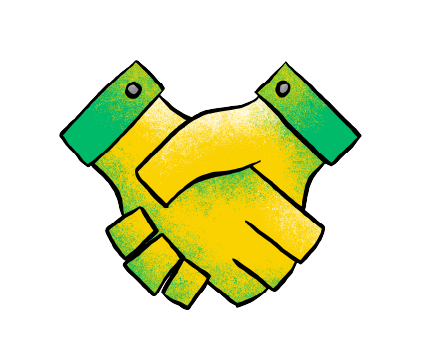
2. Get involved
Become familiar with organizations and the work being done to protect human rights and prevent genocide.

3. Foster a culture of mutual respect
Promote a culture of peace and non-violence in your daily life that includes respect for diversity and non-discrimination. This way we can build societies that are resilient to the risk of genocide.
The Department of Global Communications
wishes to thank the Government of Rwanda, Prison Fellowship Rwanda, the United Nations System in Rwanda, and the Office of the Special Adviser on Genocide Prevention.
Our special thanks to Laurence and Xavier, who have allowed us to tell their story to educate people about the horrors and futility of genocide.
Photo credits: UN Photo/Manuel Elías; Getty Images
7 April marked the start of the 1994 genocide against the Tutsi in Rwanda.
Every year on or around that date, the United Nations organizes commemorative events at UN Headquarters- and around the world.
This exhibit was launched in March 2024
